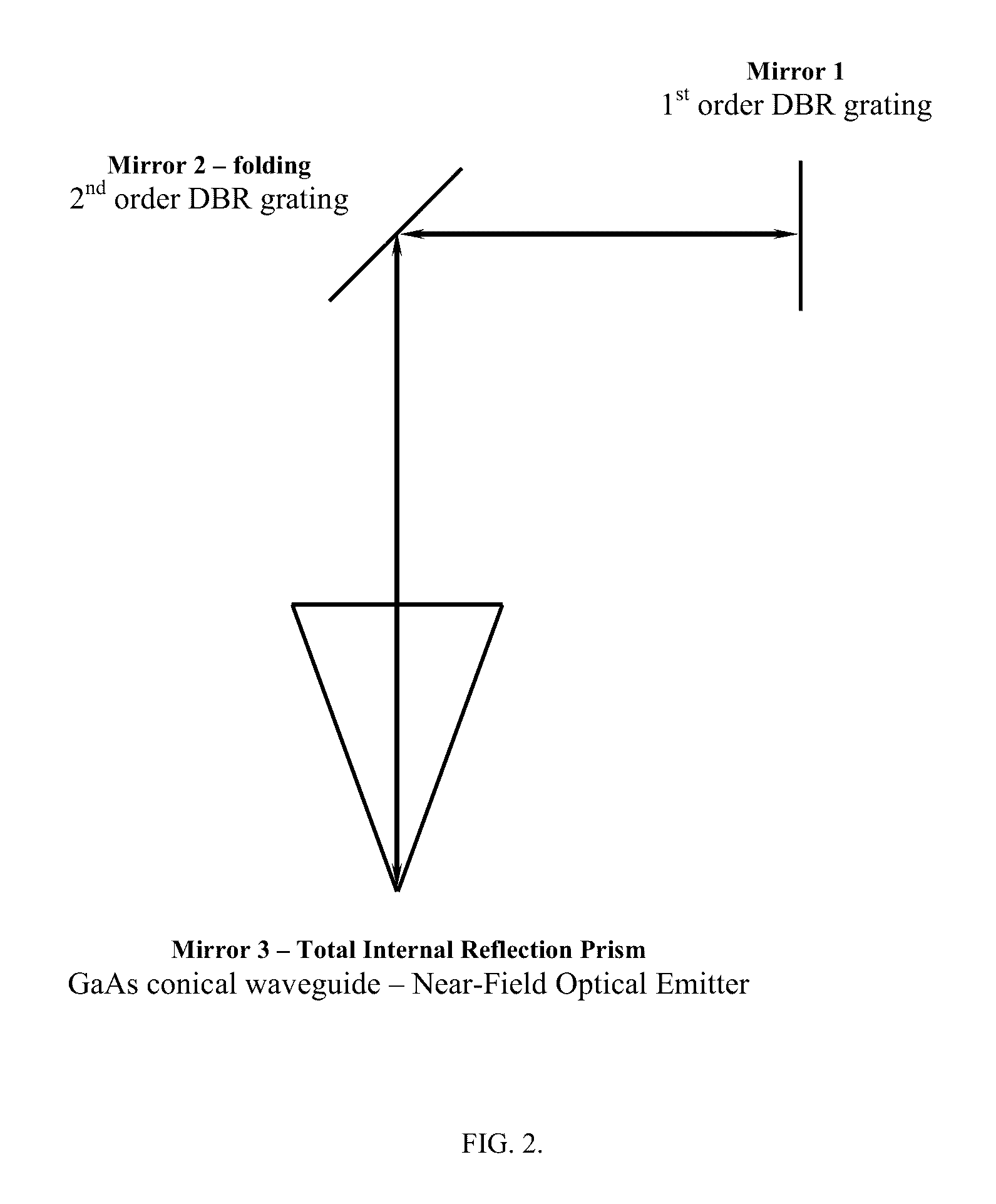Atomic force microscopy active optical probe
an active optical probe and atomic force technology, applied in scanning probe microscopy, instruments, measurement devices, etc., can solve the problems of inability to achieve high-cost optical resolution and light power, inability to achieve high-power optical output, etc., to achieve high performance, wide gain spectrum, and low cost
- Summary
- Abstract
- Description
- Claims
- Application Information
AI Technical Summary
Benefits of technology
Problems solved by technology
Method used
Image
Examples
embodiment 1
[0030]The envisioned AFM Active Optical Probe (AAOP) is shown in FIGS. 1A, 1B, and 1C. In FIG. 1A, we present a cross-sectional view of the probe. In FIG. 1B, a side view is shown, and in FIG. 1C a bottom view is shown. The AAOP consists of a cantilever 10 with the AFM probe tip 11 mounted on a conventional Si chip 12 (3.4 mm×1.6 mm×0.3 mm). The AAOP is designed as an intra-cavity probe, i.e. the AFM probe is part of the laser cavity as shown in an equivalent optical schematic of the device in FIG. 2. This increases laser light coupling into the optical near field at the apex of the AFM probe by a factor of 10,000 [Partovi 1999]. The AAOP is a very efficient optical near-field nano-emitter.
[0031]The most widely used probes for atomic force microscopy are fabricated using silicon technology. In contrast, the AAOPs are fabricated from GaAs, a semiconductor material suitable as the basis for optical device fabrication. The laser and detector functionality is enabled by an epitaxially g...
embodiment 2
[0040]In another embodiment of the present invention the mirrors #1 and #2 of the laser cavity can be in the form of facets obtained by cleaving or etching the laser wafer or by applying Focused Ion Beam (FIB) in proper directions (FIG. 6). For example, mirror #1 22 can be fabricated by cleaving or etching the wafer perpendicular to the epitaxial layers. Mirror #2 (the folding mirror) 23 can be fabricated using FIB applied in such a way as to create a flat surface at 45° with respect to the wafer surface.
embodiment 3
[0041]In yet another embodiment of the present invention, the laser 15 is a second-order distributed feedback (DFB) surface-emitting laser that employs its second-order waveguide grating 24 to outcouple the laser light vertically into the AFM tip 11 fabricated from the laser substrate 14 (FIG. 7).
[0042]Again, the light generated by the laser is coupled into the surface mode of the GaAs probe tip (conic shape micro-prism) and transferred to the tip apex. Practice of the present invention can be easily extended to graded second-order DFB lasers for much more efficient power extraction in order to increase the optical power delivered to the GaAs probe tip. Graded second-order DFB lasers employ aperiodic gratings with symmetrically changing grating period to achieve a very significant enhancement of power extraction in vertical direction [Xu 2012].
PUM
 Login to View More
Login to View More Abstract
Description
Claims
Application Information
 Login to View More
Login to View More - R&D
- Intellectual Property
- Life Sciences
- Materials
- Tech Scout
- Unparalleled Data Quality
- Higher Quality Content
- 60% Fewer Hallucinations
Browse by: Latest US Patents, China's latest patents, Technical Efficacy Thesaurus, Application Domain, Technology Topic, Popular Technical Reports.
© 2025 PatSnap. All rights reserved.Legal|Privacy policy|Modern Slavery Act Transparency Statement|Sitemap|About US| Contact US: help@patsnap.com



